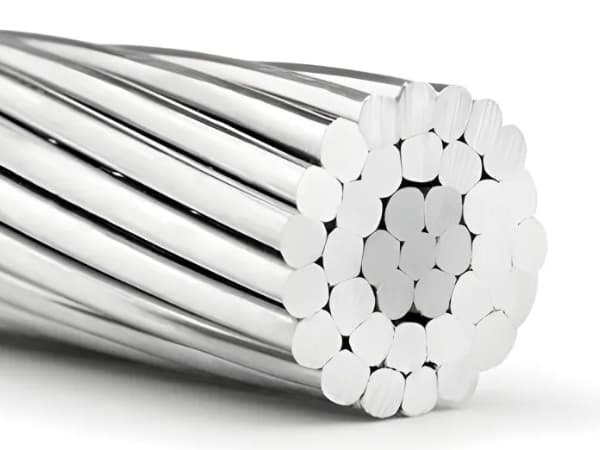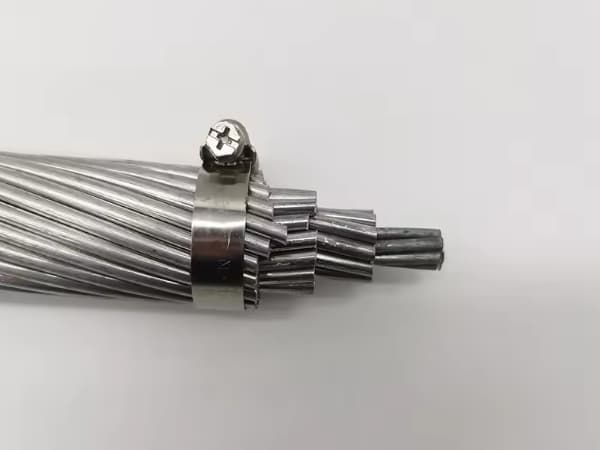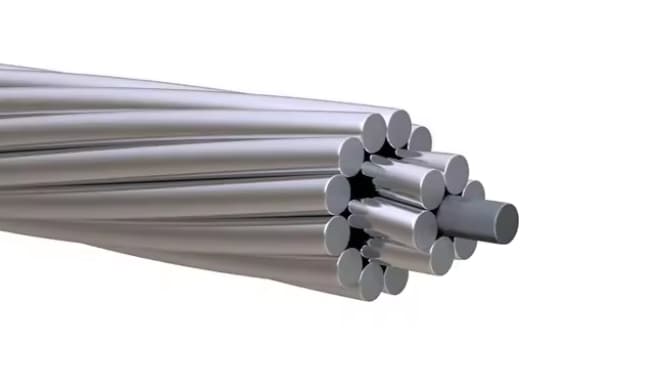
In the world of electric transmission, drivers play a crucial role in the efficiency and reliability of the system. Two of the most common types used in the transmission lines are ACSR (Aluminum Conductor Steel Reinforced) y TACSR (Thermal Resistant Aluminum Conductor Steel Reinforced). Although both share structural similarities, Its differences are fundamental when it comes to temperature resistance, Load capacity and specific applications.
Next, We analyze in detail the differences between ACSR and TACSR, Its advantages, disadvantages and situations in which it is advisable to use each.
1. What is an ACSR conductor?
Definition
He ACSR (Aluminum Conductor Steel Reinforced) It is a driver composed of a series of aluminum wires 1350-0 arranged around a galvanized steel core. The steel core function is to provide additional mechanical resistance, which makes it ideal for long adverse environmental distances and conditions.
Main features
- Steel core To improve mechanical resistance.
- Good conductivity due to aluminum.
- Moderate load capacity, adequate for most transmission applications.
- Limited operation temperature (75-85°C).
ACSR Applications
- Middle and high voltage transmission lines.
- Distribution networks where mechanical resistance is essential.
- Systems where a good relationship between cost and performance is prioritized.

2. What is a TACSR driver?
Definition
He TACSR (Thermal Resistant Aluminum Conductor Steel Reinforced) It is an improved version of the ACSR, With the main difference that the aluminum used in its structure is thermally resistant. This aluminum, Generally an aluminum and circumfus alloy (Al-Zr), It allows you to operate at much higher temperatures without losing your mechanical and electrical capacity.
Main features
- Steel core similar to ACSR.
- Thermally resistant aluminum, which allows you to operate at temperatures up to 210 ° C.
- Greater current load capacity, Thanks to its thermal resistance.
- Lower energy loss, since overheating supports better.
TACSR applications
- High energy demand transmission networks.
- Systems where to increase load capacity without changing the existing infrastructure.
- Regions with extreme climates where high temperatures can affect the performance of conventional conductors.
3. Key differences between ACSR and TACSR
| Feature | ACSR | TACSR |
|---|---|---|
| Driver material | Aluminum 1350-0 | Thermally resistant aluminum (Al-Zr) |
| Reinforcement nucleus | Galvanized steel | Galvanized steel |
| Temperature resistance | 75-85°C | Up to 210 ° C. |
| Load capacity | Moderate | Alta |
| Applications | Conventional transmission lines | High load lines and extreme climates |
| Cost | Relatively low | Higher due to advanced technology |
4. Advantages and disadvantages of each driver
Advantages of ACSR
- Lower cost compared to TACSR.
- Easy market availability.
- Good mechanical resistance for long distance lines.
Disadvantages of ACSR
- Its performance is affected by high temperatures.
- You may experience a useful life reduction in overheating conditions.
- Lower load capacity compared to TACSR.
Advantages of TACSR
- Operation at high temperatures without resistance loss.
- Greater current load capacity.
- Adequate for the modernization of networks without replacing towers or posts.
Disadvantages of TACSR
- Highest initial cost.
- More technical installation due to aluminum composition.
- It may not be necessary in systems where the transmission load is low or moderate.

5. Which one to choose? ACSR vs. TACSR
The choice between Acsr the taxr It depends on various factors:
- Load demand: If the network requires transmitting large amounts of energy, he TACSR It is the best option due to its ability to operate at higher temperatures.
- Climatic conditions: In areas of high temperatures or with fire risk, he TACSR It is more reliable.
- Cost: If the budget is a limitation and the energy load is not extreme, he ACSR It may be enough.
- Existing infrastructure: If you want to increase loading capacity without modifying structures, he TACSR it is the best option.
Conclusion
He ACSR and TACSR They are two fundamental options in the transmission of electricity. While the ACSR It is a profitable and widely used solution in conventional networks, he TACSR It offers advanced technology that allows operating at high temperatures and increasing load capacity without changing infrastructure.
Choosing the right driver will depend on the specific need for each project, Considering factors such as temperature, load capacity, Cost and availability. With an adequate selection, It is possible to guarantee an efficient and reliable transmission of long -term electrical energy.
